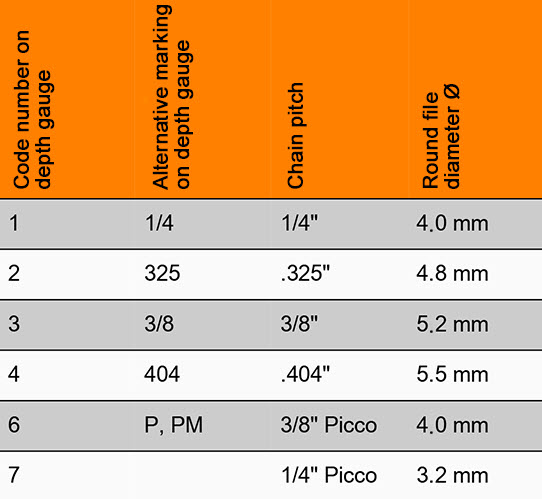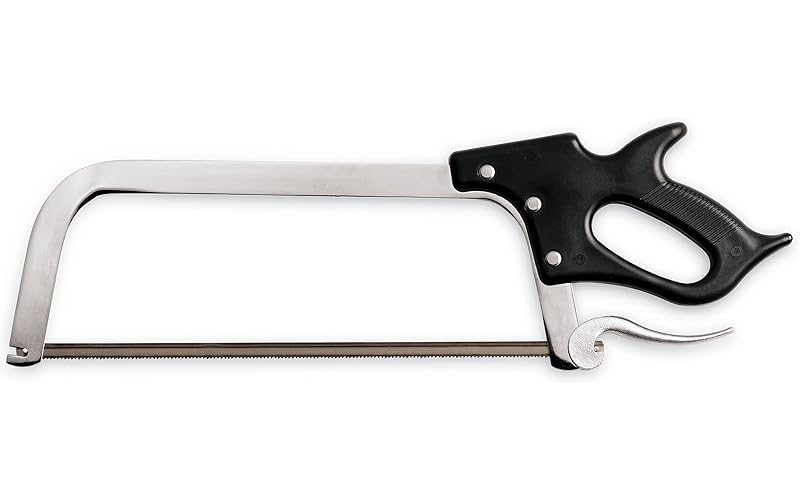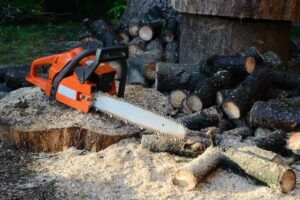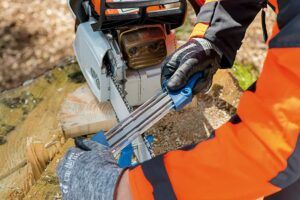
The feeling that you get when enjoying how a new chainsaw performs cannot be compared to any other feeling for an arborist. However, this newness normally wears off after some time and your saw will start disappointing you on so many levels.
Working with a dull chainsaw to an arborist is like a soldier being involved in a shootout and running out of bullets.
A matter of fact, you only need a few strokes of a file to keep your chain sharp all the time.
As arborists, we are sure you already know about the saying which says that if your chain is kept sharp then the chainsaw performs the work while if it is not then you are the one who does the work.
Basically, this saying lets you know what will happen if you don’t keep your chain sharp. But you need to know how to make your selection of the chainsaw file sizes to get a file that will match the blades of your chain and keep them sharp.
How To Determine File Size For Chainsaw Chain
Some of you may be looking forward to sharpening your chainsaws but not sure on the perfect size of the file to use. Worry not as we are going to explain everything you need to know regarding making the best file size selection.
There is always a number, also called the ID number marked on one side of every single cutter of the chain. You simply need to locate this number and match it to the corresponding file size listed on the file chart.

If you can’t easily access this information because perhaps you have misplaced your manual, there is still a way out.
Simply measure the pitch of the chain as this will help you in determining the ideal size of the file that you will need. You will either be using a round file or a flat file depending on the cutter that you will be sharpening.
To be able to know the value of the chain pitch, simply measure the distance between the centers of two adjacent rivets.
Divide the value you get by two to get the chain pitch but in millimeters. The pitch is however normally given in inches and, therefore, you must convert this value into inches.
Most of the ideal files normally come in millimeters or inches but the common ones come in 4mm, 4.5mm and 5.5 mm which correspond to 5/32 inches, 11/64 inches, and 7/32 inches respectively.
Which Tools Do You Need When Sharpening A Chainsaw?
Most if not all chainsaws normally come with clear instructions on how to go about sharpening them. There are two broad ways into which the process of sharpening chainsaws can be classified and these are manual sharpening or professional sharpening.
For those who will opt for the manual way as the way to go when sharpening their chainsaws, there are certain tools that you will have to be armed with.
In simple terms, you will need to invest in what is called a chainsaw file kit. This kit will come with all the tools that will be useful to you and they are discussed below:
A File Guide
This will be useful in keeping the round file at the same depth. The file guide will also help you in holding the file at the set correct orientation and height. This ensures that there is consistency when each individual cutter is being filed.
A Flat File
This will be useful in helping you when you want to set the length of depth gauges.
Depth Gauge Guide
Sometimes you may want to know the depth at which you are filing. This is where the depth gauge guide comes into play. It comes in various sizes and, therefore, it is advisable to check the specifications of your chainsaw before buying one. It is always advisable to be adjusting the depth gauge every moment after sharpening your chain twice or three times.
Chainsaw Filing Vise
This one is an optional tool that you may decide to have or not. Those who have a vice and workbench don’t necessarily need this chainsaw filing vise. However, if you are in the field then it will become quite useful. You will only be needed to force it into a given log and you will end up having a ready-made vise for holding the guide bar.
A Round File
This is yet another important tool that should never miss in your chainsaw file kit. The round file will be useful in sharpening the cutting edges of the chain cutters. This round file needs to perfectly match the diameter of the cutters. The most commonly used by most homeowners are 7/32’’, 3/16’’ and 5/32’’.
A Pair Of Gloves
You must make sure you have good quality and a heavy pair of gloves specifically made for operating sharp equipment. This is obviously to protect you from any cuts that may come as a result of dealing with sharp objects.

Useful Tips For Sharpening A Chainsaw Using A File
When it comes to sharpening chains manually, one needs to be equipped with some tips in order to successfully carry out the task.
- Ensure you wear the gloves before you can start carrying out this process. This is part of your safety and should be handled with the seriousness it deserves.
- Ensure that you have engaged the brake to stop the chain from moving when doing the chain sharpening process.
- In a very gentle way, go ahead and clamp the guide bar in a vice.
- Position the file guide in between the rivets on the chain while ensuring that arrows on the guide point towards the front part of the chain.
- Make use of steady but even strokes while filing the cutter.
- After having a good number of the cutters sharpened, you can release the brake and then move the chain along. Reset the brake then continue sharpening other cutters.
- After sharpening all the cutters on a single side of the saw, turn the saw so as to able to sharpen the cutters on the other side of the chain too.
- Having sharpened all the cutters, proceed on to the depth gauges which are the pieces of metal shaped like the fins of a shark. Using the file and depth gauge, you can adjust the height of the gauges on the chain.
Conclusion
A chainsaw can become pretty useless and very tiring to use should you decide to keep the blades of the chain dull.
When it comes to sharpening the blades of the chain and keeping them sharp, you need several tools but one that can never miss is a file and by extension, you need to know how to choose the chainsaw file sizes. This is because using the incorrect file size will simply not be helpful to you.
For this article, you now know how to choose a perfect file size that will help in sharpening your chain and making your chainsaw perform like its new.
When the chainsaw performs like you expect it to, your work will be made so easy and you will love taking part in cutting, trimming and taking care of the trees under your care.




![9 Best Pole Saws of 2023 [Ultimate Guide] 9 Best Pole Saws of 2023 [Ultimate Guide]](https://handykeen.b-cdn.net/wp-content/uploads/2021/03/best-pole-saw-300x200.jpg)


